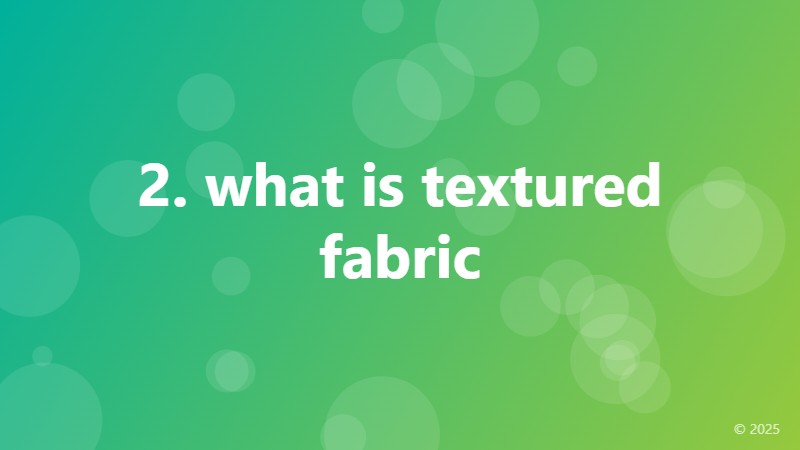2. what is textured fabric

Unlocking the World of Textured Fabric: A Comprehensive Guide
When it comes to fabrics, texture plays a crucial role in determining the overall aesthetic and functionality of a garment or textile product. Among the various types of fabrics, textured fabric has gained immense popularity in recent years due to its unique characteristics and benefits. But what is textured fabric, and how does it differ from other types of fabrics?
Defining Textured Fabric
Textured fabric refers to a type of fabric that has a raised or irregular surface, creating a three-dimensional effect. This texture can be achieved through various methods, including weaving, knitting, or embossing. The resulting fabric has a unique tactile quality, which can add depth, visual interest, and even functionality to a garment or textile product.
Types of Textured Fabrics
Textured fabrics come in a wide range of styles and textures, each with its own unique characteristics and uses. Some common types of textured fabrics include:
Bouclé fabric: Known for its looped or curled yarns, bouclé fabric has a soft, chunky texture and is often used in garments such as coats, jackets, and hats.
Faux suede fabric: This type of textured fabric mimics the look and feel of real suede, but is often made from synthetic materials such as polyester or nylon.
Velvet fabric: Characterized by its soft, plush pile, velvet fabric is often used in formal wear, upholstery, and home decor.
Tweed fabric: A type of woven fabric, tweed is known for its rough, irregular texture and is often used in garments such as suits, jackets, and skirts.
Benefits of Textured Fabric
Textured fabric offers a range of benefits, including:
Aesthetic appeal: Textured fabric adds depth and visual interest to a garment or textile product, making it stand out from plain fabrics.
Functionality: Textured fabric can provide additional functionality, such as insulation, water resistance, or durability.
Versatility: Textured fabric can be used in a wide range of applications, from garments and upholstery to home decor and accessories.
Conclusion
In conclusion, textured fabric is a unique and versatile type of fabric that offers a range of benefits and uses. By understanding the different types of textured fabrics and their characteristics, designers and manufacturers can create innovative and functional products that meet the demands of modern consumers.